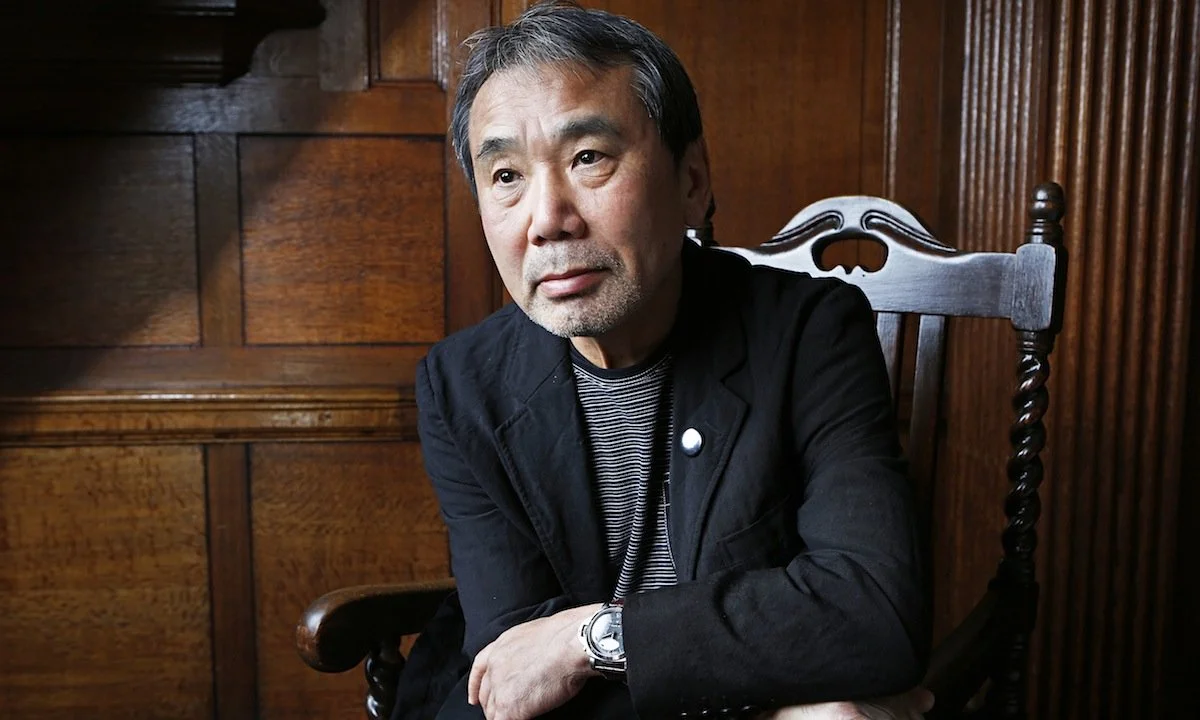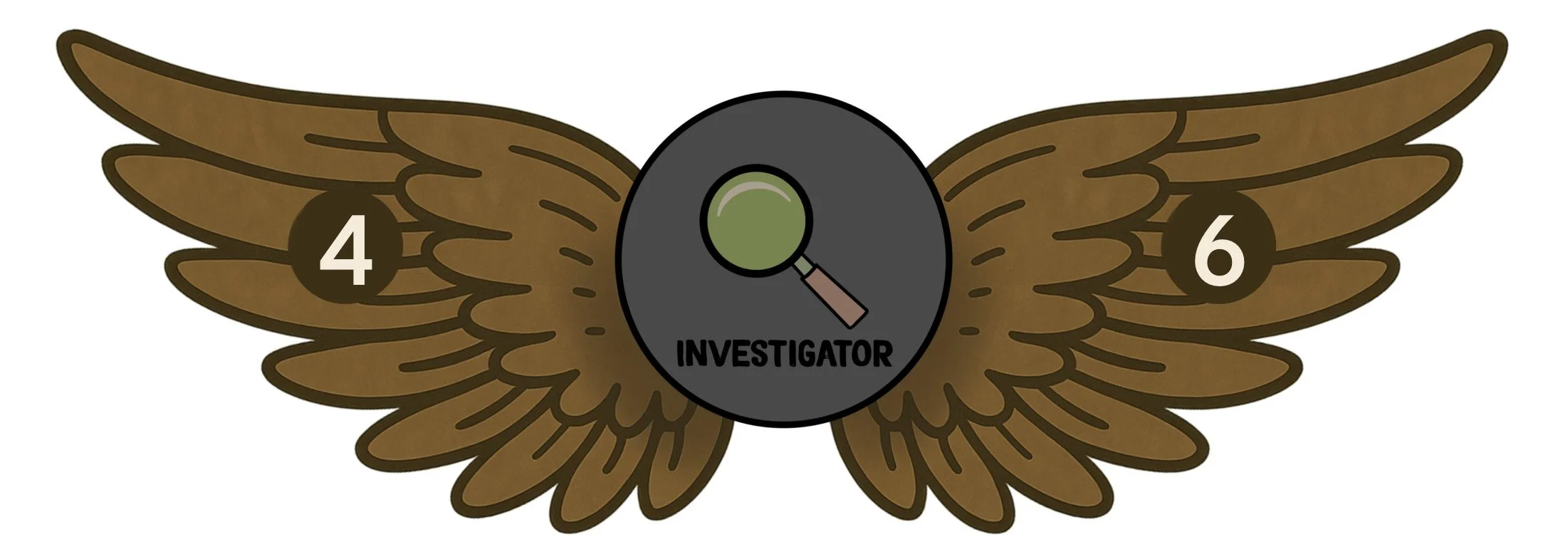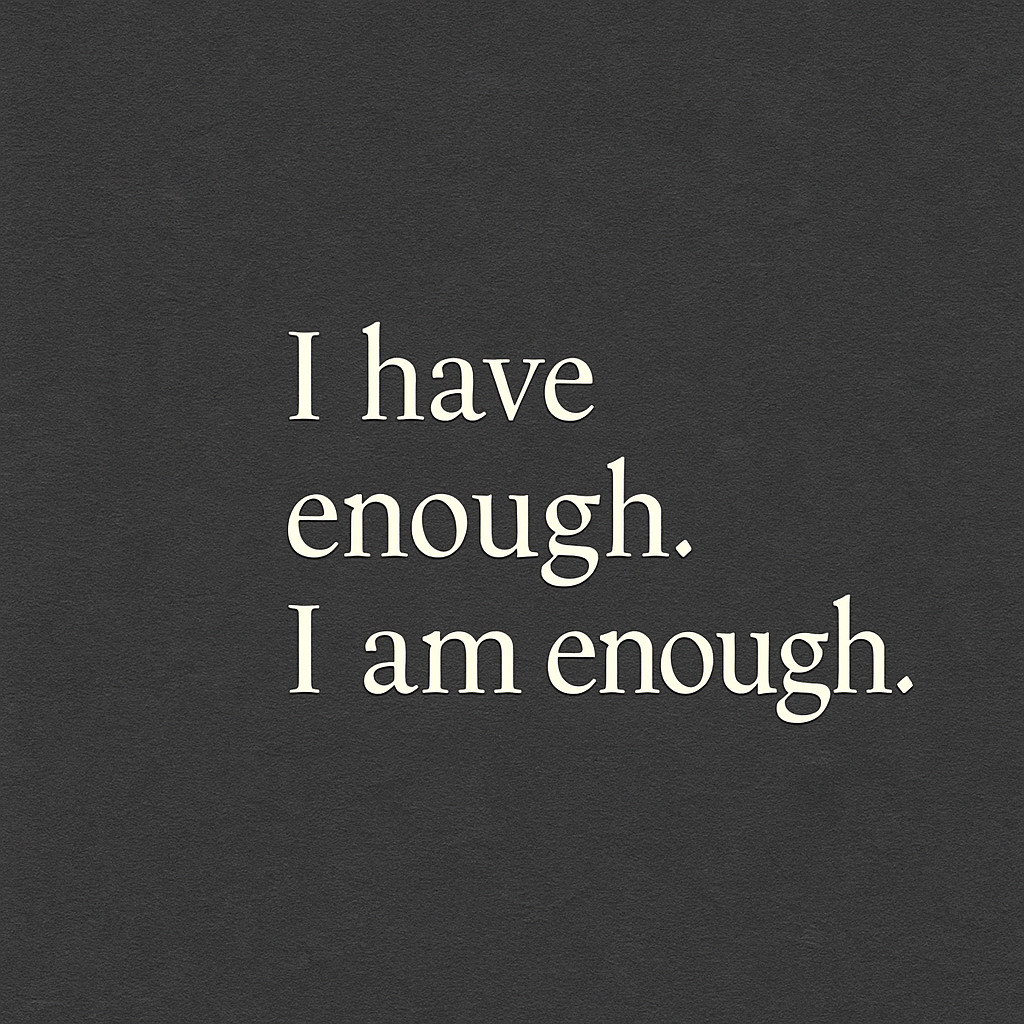Introduction
Type Fives are most at home in quiet corners, introspective, observant, and comfortably tucked behind the scenes. While others fill the space with words, energy, or emotion, Fives are often scanning, analyzing, and conserving. These are the cerebral types: independent, curious, and often brilliant. They drink in knowledge the way plants drink sunlight, and they’re often found five steps ahead of the conversation, internally calculating everything from escape routes to emotional probabilities.
Fives recharge through solitude and silence. While others are inside mingling or stirring up group energy, a Five might be perfectly content sitting on the porch, watching the breeze move through the trees, fully plugged into a chair like it's a charging dock. It’s not avoidance, it’s restoration. Their internal battery only holds so much charge, and every social interaction, task, or demand drains it. Quiet stillness, spaciousness, and the ability to observe without being observed are often what bring them back to baseline.
They’re also notoriously slow to make big decisions, not because they’re indecisive, but because they’re thorough. A Five won’t just buy a car, they’ll read three years of Consumer Reports, compare torque ratios, interview current owners, and build a spreadsheet before test-driving anything. They need to feel informed before they feel confident, and confidence, for a Five, is everything.
Beneath the stoic exterior lies a deep longing: “Will I still be safe and capable if I run out of resources, time, energy, knowledge, privacy?” Fives often navigate the world as if they have a finite amount of internal battery power, guarding their solitude and inner world like it’s sacred (because to them, it is).
When a Five really loves and cares for you, you’ll know it because they show up for you: going to your events, sitting with you, etc. This is such a gift from this type when you consider how much they hoard their time and energy. If they are spending that finite resource for you, then you are truly loved by a five.
1. Center Of Intelligence: The Head (Types 5, 6, 7) = Fear
[The Enneagram divides the nine types into three Centers of Intelligence: the Head, Heart, and Gut. Each center processes the world primarily through either thinking, feeling, or instinct.]
Head types navigate life through thought, analysis, and forecasting. They take in the world through their mind, constantly scanning for patterns, potential dangers, and the best path forward. Their thoughts often move quickly, and they rely on logic, planning, or imagination to make sense of the chaos around them.
The emotional struggle for this center is fear. Whether it’s expressed through withdrawal and detachment (5), anxiety and worst-case-scenario thinking (6), or distraction and overplanning (7). Building trust in themselves and the world is central to their growth.
If you’re a Type 5, 6, or 7, you probably analyze everything (sometimes to a fault), and seek mental clarity as a way to make sense of a world that can feel unpredictable or overwhelming.
2. Core Motivation, Fear, and Desire
[These are the inner drivers behind the type’s behavior: the deep needs they’re trying to meet, the fears they avoid, and what they long for most.]
Key Motivation: To understand the world and to feel capable and self-sufficient in navigating it.
Basic Fear: Being useless, helpless, or incapable.
Basic Desire: To be capable and competent.
3. Wings
[Your “wings” are the two numbers on either side of your core type. Most people lean more toward one or the other, which flavors their personality.]
Wing 4 (The Iconoclast):
Adds emotional depth, artistry, and a unique aesthetic sensitivity to the intellectual Five. This version of the Five might write poetry in the margins of their research notes.
Wing 6 (The Problem Solver):
Adds loyalty, practicality, and systems-thinking. More risk-averse and loyal to ideas, mentors, or frameworks.
4. Relational Stance and Repressed Center
[Each Enneagram type belongs to one of three stances: strategies for how we move through the world and try to get our needs met. These stances describe habitual energy patterns, not just how you interact with others, but how you cope with stress, seek connection, and protect your sense of self.]
Stance: Withdrawing
( like 4s and 9s)– Fives step back rather than move forward when faced with demands. They prefer internal analysis over external action, often wallflowering.
Repressed Center: Doing.
Productive doing gets repressed in favor of thinking, observing, and researching. Fives may spend so much time planning or researching that they never get around to acting.
5. Passion / Sin: Greed
[This is the emotional habit or "core vice" of the type, the thing they fall into when they’re out of alignment with their true self.]
The greed that Fives have is not in the traditional sense, like for money or material things, but for time, space, and energy. Fives often feel a scarcity mindset that tells them: “I don’t have enough to give.” Their instinct is to conserve, not because they’re selfish, but because the world can feel overwhelming and intrusive.
6. Childhood Patterns
[This section highlights the unconscious messages each type internalized in childhood, both the false beliefs they absorbed and the healing truths they missed but longed to hear.]
Unconscious Message: “It’s not okay to be too comfortable in the world.”
Lost Childhood Message: “Your needs are valid and they matter.”
Fives often felt overwhelmed, intruded upon, or emotionally engulfed in childhood. Whether through literal overstimulation or a subtle sense that the world demanded too much from them, they learned early on that retreating inward was the safest way to cope. Some describe feeling like there wasn’t enough space (physically, emotionally, or energetically) for their needs or expression, or the pace at which they are able to express.
In response, they began conserving: their energy, their emotions, their presence. Curiosity became a refuge, and knowledge became the currency of control. Instead of rushing to meet others’ expectations, they withdrew to their internal world where they could observe, analyze, and prepare.
Over time, they came to believe that safety came from self-reliance and that having needs made them vulnerable. Their core wound isn't about a lack of love, but a lack of spaciousness.
7. Growth and Stress Arrows
[The Enneagram symbol includes dynamic lines that show where each type tends to go under stress and where they go when growing. When stressed, a type may take on the less healthy traits of another number. In growth, they may adopt the healthier aspects of yet another. Understanding these arrows helps with intentional development.]
8. Superpower
[Every Enneagram type brings a specific gift to the world. A unique strength that flows when they’re aligned and healthy. This isn’t just what they’re good at, it’s what makes them a necessary part of a thriving, balanced world.]
Clarity & Insight – Fives have a rare gift for seeing things others miss, primarily due to their ability to be still and just observe. Their ability to detach, observe, and think deeply allows them to cut through noise and get to the essence of a problem. They don’t just gather knowledge, they synthesize it into original insight. In a chaotic or emotionally charged world, Fives offer perspective, precision, and the ability to calmly hold complexity without needing to rush toward resolution. Their neutrality is a kind of wisdom, grounded, spacious, and razor-sharp. Fives have a rare ability to step back from emotional entanglement and see things with clear, unbiased perspective. They’re often the ones in the room who can hold space for complexity without getting swept up in it, able to assess situations without taking them personally.
9. Common Challenges
[This section explores what tends to trip this type up: recurring emotional patterns, blind spots, and areas of struggle. These aren’t flaws, but rather predictable pitfalls that can become opportunities for growth with awareness and support.]
Emotional Detachment – Fives often feel safest when they’re not emotionally entangled. But that distance can make it hard for others to feel connected to them, and for Fives to fully experience their own emotional lives.
Scarcity Mindset – Whether it’s energy, time, attention, or resources, Fives often operate from a baseline belief that there’s “not enough.” This can lead to hoarding their inner world and avoiding situations that feel too demanding.
Isolation & Withdrawing – When overwhelmed, Fives tend to retreat… and then stay gone. Their need for solitude is real, but it can become a trap when it blocks them from the relational nourishment they actually crave.
Overthinking & Inaction – Fives can get stuck in the research-and-prep phase, hesitating to act until they feel completely ready (which, let’s be real, rarely happens). This can stall growth, relationships, and real-world engagement.
Reluctance to Ask for Help – Self-sufficiency is a point of pride for many Fives, but it can also isolate them. Asking for help feels like exposure (like a loss of control) so they often don’t do it, even when it would deeply benefit them.
10. Subtypes
[This refers to your dominant instinct, self-preservation, social, or one-to-one (also called sexual), which shapes how your Enneagram type shows up in daily life. Each type can look quite different from each other. Each Enneagram type has an instinctual subtype that is often called the “countertype.” This version runs counter to the usual stereotype of the type, meaning it may express its core motivation in a less obvious or even contradictory way. Countertypes can make it harder to spot your number at first because they don’t always “look like” the textbook version, but the underlying motivation is still the same.]
Self-Preservation Five (The Castle): The most withdrawn of all the Fives. Hoards privacy, physical space, time, and even food. Often has a deep desire for a safe, contained environment where no one can intrude.
Social Five (The Professor): Paradoxically more social. But within structured, intellectual contexts. Enjoys teaching, sharing ideas, and building expertise that earns them a place in the tribe, all without getting too vulnerable.
One-to-One Five (The Confidant or Secret Keeper): Seeks intense, private connection with just one trusted person. May seem emotionally intense or surprisingly romantic, though often still quite private and reserved.
(Countertype)
11. Emotional, Energy, and Communication Styles
[This section explores what tends to trip this type up: recurring emotional patterns, blind spots, and areas of struggle. These aren’t flaws, but rather predictable pitfalls that can become opportunities for growth with awareness and support.]
Emotional Style: Contained, avoidant, thrifty, reflective. May withhold even from themselves. Fives feel things deeply, but privately. Their emotional landscape is rich and complex, even if it rarely makes it to the surface. Still waters run deep—and theirs run very deep.
Energy: Detached, robotic, cerebral. Can seem removed or preoccupied.
Communication Style: Reserved, precise, observant. Can be profound or cryptic. Listens more than they speak but when they speak, it matters.
12. Therapy Perspective
[Practical notes from a therapist’s point of view: what this type might need in counseling and what healing often looks like. This is where you’ll find tips, reminders, and patterns that tend to emerge when this type is doing inner work.]
Fives often arrive in therapy because they’re overwhelmed but can’t quite figure out why. They’ve thought through every angle of their problem ten times, but they haven’t felt it. They tend to live in their heads, dissociating from emotions, keeping them neatly filed away in a compartment labeled “Too Much.” Describing what they feel can feel awkward, invasive, or even pointless. Vulnerability, for a Five, isn’t just uncomfortable, it feels like a potential energy leak. Fives can often arrive to therapy with relationship issues to work through because they tend to feel oppressed by their romantic partner’s need to more outward affection.
In fact, the act of coming to therapy at all may feel like a drain on precious internal resources. Fives are naturally protective of their time, energy, and attention, often operating from a baseline fear that they don’t have enough of any of it to go around. Their inner economy is frugal, and therapy, with its emotional demands and time commitment, can feel like a luxury they can’t afford.
In the therapy space, it’s important to validate this sense of energetic scarcity while also gently challenging it. Fives often benefit from learning that emotional expression doesn’t have to be depleting and that bringing their internal experience to the surface can be an act of resourcing, not erosion.
Another common stuck point: doing. Fives are part of the withdrawn stance and often repress action in favor of observation and preparation. They may come to therapy with brilliant insights and frameworks but struggle to translate them into embodied, actionable change. Helping them engage in small, low-risk “doing” experiments (like expressing a need, setting a boundary, or trying a grounding practice) can slowly build the muscle of confident action.
Therapists working with Fives need to be steady, calm, and non-intrusive. Fives respond well to clear boundaries, a thoughtful pace, and a therapist who respects their need for space while consistently inviting them to stretch into relational and emotional presence.
13. Pop Culture Examples (Hypothetical)
[Real and fictional people who are widely considered to represent this Enneagram type. These examples help ground abstract concepts in relatable characters and show how the type can manifest in very different lives.]










Real People:
1. Albert Einstein
A poster child for the quiet genius archetype. Einstein lived in his head, relentlessly curious and inwardly focused—preferring ideas to small talk and depth to drama.2. Bill Gates
Analytical, intensely private, and driven by knowledge. Gates epitomizes the Five's love of systems, problem-solving, and building expertise behind the scenes.3. Haruki Murakami
This reclusive Japanese novelist channels his inner world into rich, introspective stories, layered, surreal, and emotionally restrained, just like a self-pres Five might write.4. Emily Dickinson
A brilliant recluse who preferred the company of words to people. Her poetry reflects the solitary intensity and inner richness of a classic withdrawn Five.5. Brian May (of Queen)
Astrophysicist and legendary guitarist? May's dual passions for science and art reflect the Five's expansive curiosity and his quiet, low-profile personality fits the type to a tee
Fictional Characters:
Sherlock Holmes (various adaptations)
Coldly logical, emotionally detached, and endlessly curious, Sherlock is a textbook Five, solving problems with precision while remaining intensely private.Bruce Banner / The Hulk (Marvel)
Banner is the science-obsessed, introverted Five, always retreating to study, analyze, and control his emotional side (which, when ignored, turns into the Hulk…).Lisbeth Salander (The Girl with the Dragon Tattoo)
Emotionally walled-off but fiercely intelligent, Lisbeth’s sharp mind, independence, and survival instincts show the intense, mistrusting nature of a wounded Five.Beth Harmon (The Queen’s Gambit)
An orphaned chess prodigy who retreats into solitude and intellect. Beth’s need for control, her private emotional world, and her obsessive pursuit of mastery all reflect classic Type 5 patterns. She feels safest when she’s in control of her mind and her environment.Spencer Reid (Criminal Minds)
With a genius IQ, massive knowledge bank, and endearing social awkwardness, Reid is a classic Five who brings insight to the team without needing the spotlight.
Path to Growth: So, Now What?
What Growth Means for Type 5
For Fives, growth means moving from being primarily in the head, observing, analyzing, collecting knowledge, to engaging more with life, with feelings, with the world in a balanced way. It means letting go of isolation, trusting more deeply in one’s capabilities in action (not just in thought), and embracing connection, vulnerability, and presence alongside insight.
Early Signs of Growth
Recognizing when one is withdrawing into thought or isolation as a way to avoid discomfort, rather than a necessity.
Taking small steps toward engaging physically or socially, even when the thought “I’m not ready / don’t know enough” is still there.
Allowing emotional needs or desires to be seen (to self or trusted others), instead of suppressing them in favor of self-sufficiency.
Making decisions and taking action even without having complete knowledge or perfect clarity.
Letting one’s expertise or interests be shared, not hoarded or only for self-validation.
Practices that Support Growth
Grounding routines: physical practice, embodiment (yoga, walking, dancing, exercise) that bring awareness into the body and present moment.
Mindfulness or meditation focused on noticing when the mind is “over-running” or when retreat into ideas is becoming avoidance.
Setting small “reach out” goals: sharing something you know with someone, showing vulnerability, asking for help, participating rather than observing.
Journaling or reflective writing: tracking thoughts of inadequacy (“I’m not competent”) or fears about vulnerability, exploring their roots, and rehearsing alternative narratives.
Choosing one project to complete, rather than remaining in perpetual study/preparation, practicing finishing, acting, and doing.
Building trusting relationships: finding people with whom you feel safe to share ideas you’re uncertain about; letting people in gradually.
What Mature Growth Looks Like
A Five who uses their insight and knowledge not to stay detached, but to enrich connection, to contribute, to support others, and to engage practically.
Comfort with uncertainty, ambiguity, and not knowing; able to act even when not all variables are known.
Emotional presence: feelings are acknowledged, let in, expressed appropriately; relational depth rather than mere observation.
Balance between solitude (which gives space, creativity, reflection) and engagement, active participation in life.
A sense of embodiment: caring for physical needs, energy, rest; integrating mind, body, emotions.
Moving from “I know” toward “I live,” “I love,” “I contribute,” with confidence in competency that is proven through doing and being, not just thinking.
Watch Out For…
“False growth” traps: accumulating knowledge or offering insight only to maintain separation; appearing “enlightened” while still avoiding vulnerability or relational risk.
Overcorrection: either cutting off thinking/analysis entirely out of rebellion, or over-engaging others’ expectations in pursuit of connection at costs to autonomy.
Perfectionism in knowledge: waiting until “everything is perfect” before acting; fear of being exposed as incompetent as a barrier to doing.
Emotional suppression: thinking feelings are irrational, messy, or distracting, so they’re ignored or minimized.
Isolation becoming identity: believing that withdrawal is good or safe, though it keeps one from growth and relational richness.
Encouragement for the Journey
The move toward growth for Fives is courageous. It’s about trusting that your inner world is a resource, not just a retreat; that your mind’s strength doesn’t have to fence you off from life. Every time you allow yourself to feel, to risk being seen, to finish something imperfectly, you are growing. These steps, small, gentle, consistent, build a richer, fuller way of being. You’re allowed to need others. You’re allowed to not have all answers. You are enough even as you lean into more participation, more relation, more wholeness.
Bonus! The Quinessential Type Five Playlist
I scoured the internet, fan forums, and my own late-night feels to curate songs that capture the emotional world of a true Type Five. Whether you're deep in your feels, hyping yourself up, or trying to figure yourself out, this playlist is for you.
14. Journal Prompts
[Reflective questions tailored to this type’s inner world for self-awareness, growth, and emotional clarity. Designed to help readers get curious about their patterns, relationships, and deeper motivations.]
What do you believe you must protect to feel safe?
What are your relationships to time, energy, and privacy?
Where do you over-prepare instead of taking action?
What helps you feel safe enough to share your inner world?
What would it look like to trust that your presence is enough even without expertise?
15. Final Encouragement
Dear Type Five, You don’t have to have all the answers to be worthy of connection. You are more than what you know. The world needs your insight, yes, but it also needs your presence. You won’t run out of energy just by showing up. In fact, you might find that connection recharges you more than you ever expected.
You are safe to take up space. You don’t have to earn your right to exist through competence or preparation. Letting people in, even just a little, doesn’t mean you’ll be consumed. Because if you can share with your people the ways in which you recharge and the space that you need for that, they can show up for you better. Your mind is a gift but it’s not the only part of you that matters.
You are allowed to feel, to need, to act, even when the path ahead isn’t fully mapped. You don’t have to wait until you’ve figured everything out to participate in life. The world isn’t asking for your perfection, it’s inviting your whole self.
Type 5 Mantra
A gentle reminder when you’re tempted to retreat, withhold, or hoard your energy.









